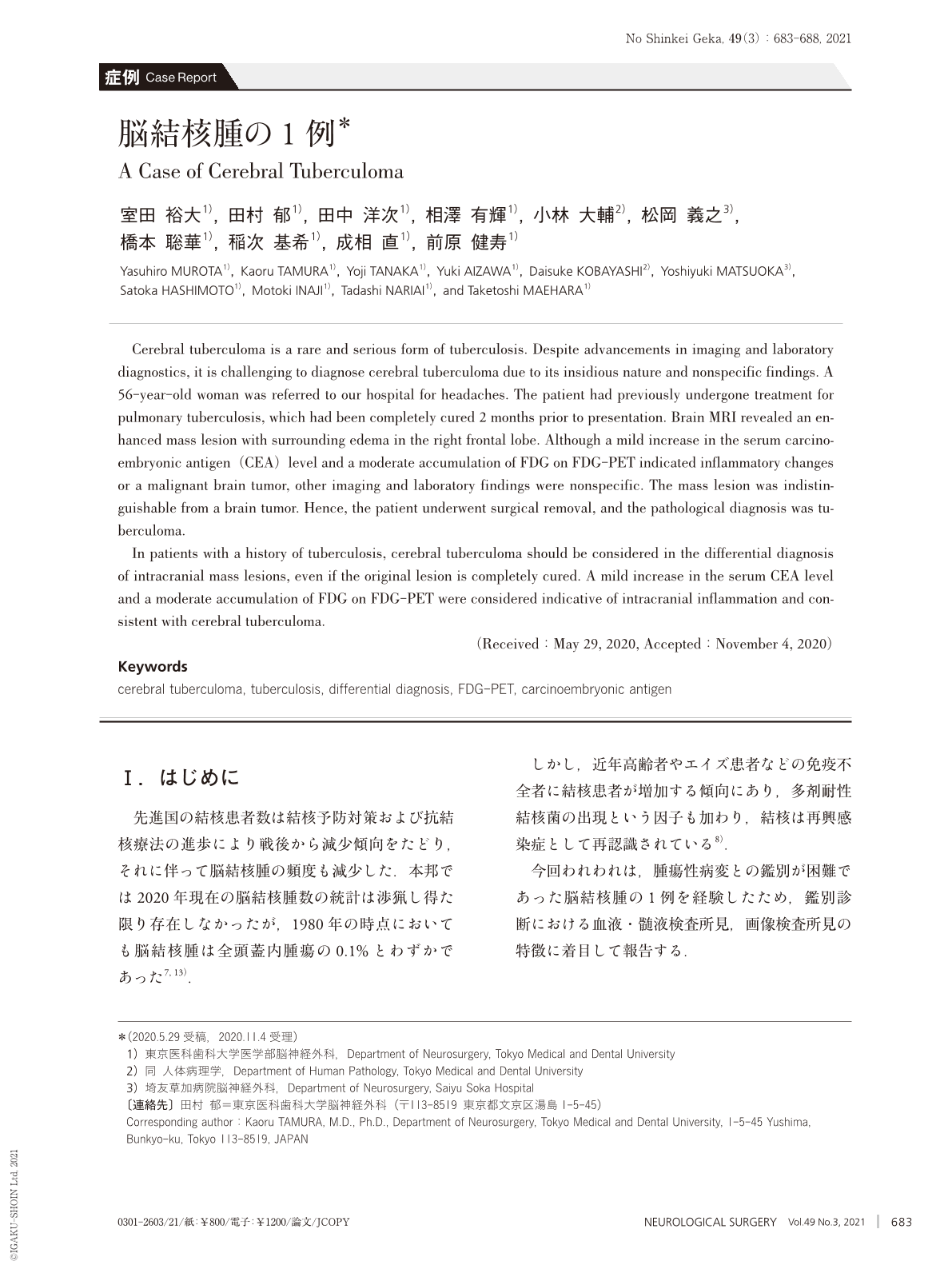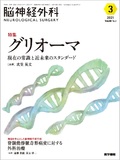Japanese
English
- 有料閲覧
- Abstract 文献概要
- 1ページ目 Look Inside
- 参考文献 Reference
Ⅰ.はじめに
先進国の結核患者数は結核予防対策および抗結核療法の進歩により戦後から減少傾向をたどり,それに伴って脳結核腫の頻度も減少した.本邦では2020年現在の脳結核腫数の統計は渉猟し得た限り存在しなかったが,1980年の時点においても脳結核腫は全頭蓋内腫瘍の0.1%とわずかであった7, 13).
しかし,近年高齢者やエイズ患者などの免疫不全者に結核患者が増加する傾向にあり,多剤耐性結核菌の出現という因子も加わり,結核は再興感染症として再認識されている8).
今回われわれは,腫瘍性病変との鑑別が困難であった脳結核腫の1例を経験したため,鑑別診断における血液・髄液検査所見,画像検査所見の特徴に着目して報告する.
Cerebral tuberculoma is a rare and serious form of tuberculosis. Despite advancements in imaging and laboratory diagnostics, it is challenging to diagnose cerebral tuberculoma due to its insidious nature and nonspecific findings. A 56-year-old woman was referred to our hospital for headaches. The patient had previously undergone treatment for pulmonary tuberculosis, which had been completely cured 2 months prior to presentation. Brain MRI revealed an enhanced mass lesion with surrounding edema in the right frontal lobe. Although a mild increase in the serum carcinoembryonic antigen(CEA)level and a moderate accumulation of FDG on FDG-PET indicated inflammatory changes or a malignant brain tumor, other imaging and laboratory findings were nonspecific. The mass lesion was indistinguishable from a brain tumor. Hence, the patient underwent surgical removal, and the pathological diagnosis was tuberculoma.
In patients with a history of tuberculosis, cerebral tuberculoma should be considered in the differential diagnosis of intracranial mass lesions, even if the original lesion is completely cured. A mild increase in the serum CEA level and a moderate accumulation of FDG on FDG-PET were considered indicative of intracranial inflammation and consistent with cerebral tuberculoma.

Copyright © 2021, Igaku-Shoin Ltd. All rights reserved.


